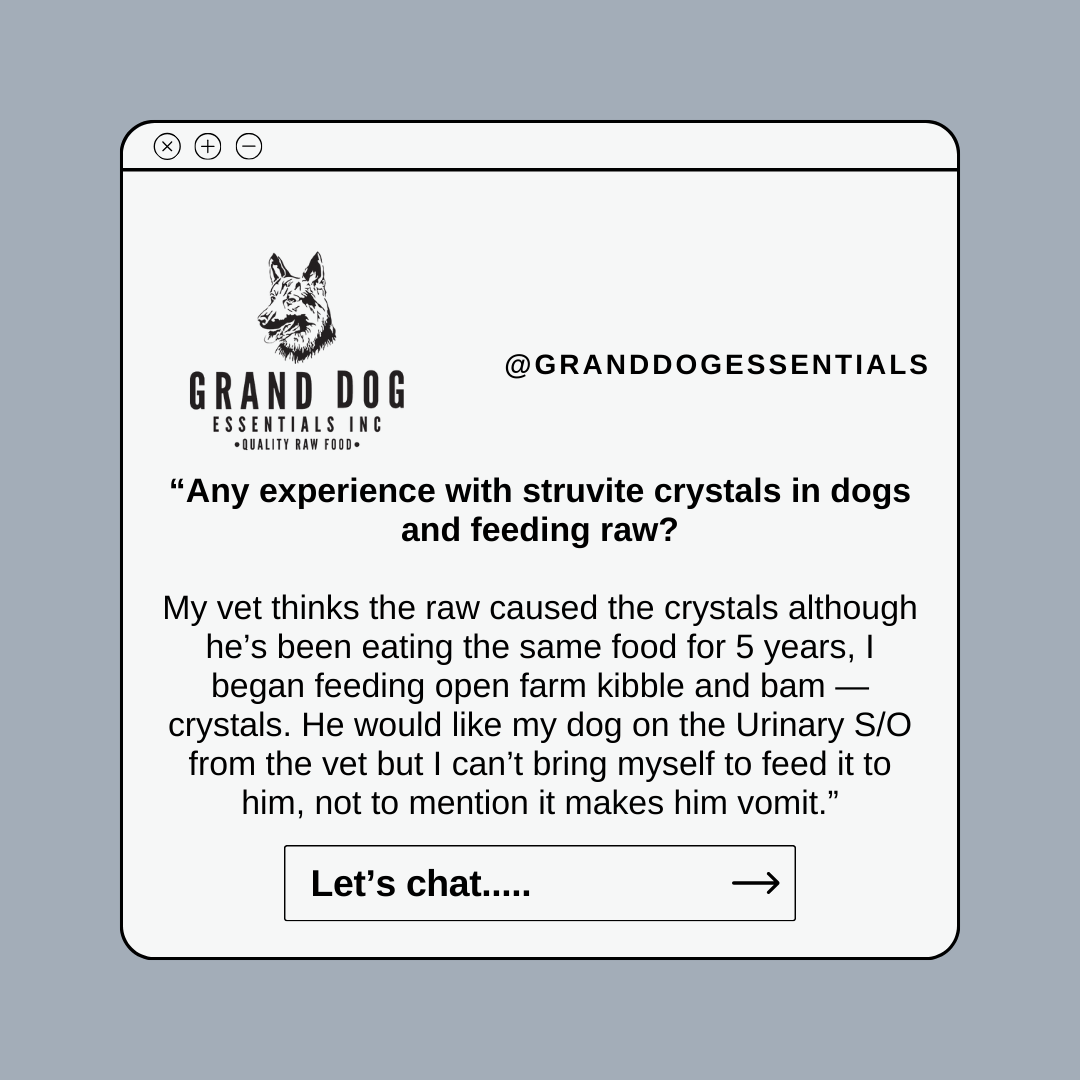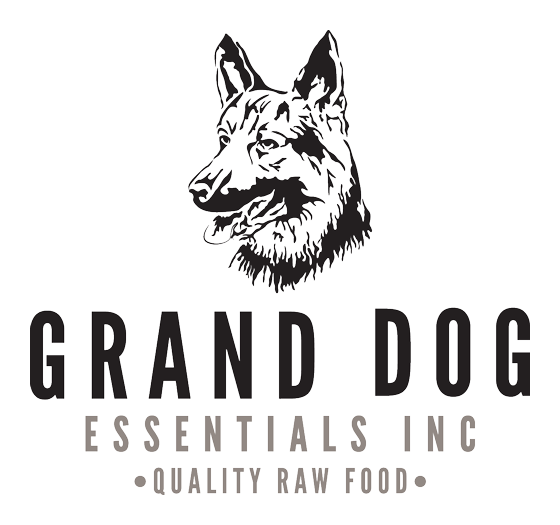Does Raw Dog Food Create Struvite Crystals?
March 7, 2024 – Amanda Monsma

A couple of weeks ago, I saw this question in a Facebook Raw Feeding group:
“Any experience with struvite crystals in dogs and feeding raw? My vet thinks the raw caused the crystals although he’s been eating the same food for 5 years, I began feeding open farm kibble and bam — crystals. He would like my dog on the Urinary S/O from the vet but I can’t bring myself to feed it to him, not to mention it makes him vomit.”
So naturally, I went digging to create this Instagram post. This blog post is an extension of that post with a little more detail and nuance.
I am not a vet
It's not black and white, and it shouldn't be treated as such.
Struvite stones can form when there is excess minerals in the urine. Particularly excess magnesium, ammonium, and phosphorus.
Stuvite stones can form when the PH (alkaline) levels of the urine are 7.5 or higher. Ideal PH levels for dogs is 7.0 - 7.5. Ideal levels for cats is 6.3 - 6.6.
Struvite crystals are associated with urinary tract infections and can lead to stones if UTI’s are left untreated.
Struvite stones tend to be more common in female dogs. In general, all dog breeds can get stones (Struvite, Urate, Cystine, Silica), but some breeds are more susceptible than others:
- Shih Tzu
- Miniature Schnauzer
- Bichon Frise
- Lhasa Apso
- Yorkshire Terrier
- Dalmatians (Urate stones)
- Newfoundlands (Cystine stones)
- German Shepherds (Silica stones)
Symptoms
Below are common signs that a dog may have stones. Difficulty peeing can be life threatening. If your dog is having a hard time urinating, get them to a vet immediately.
- Difficulty peeing – straining, frequent attempts
- Pain when peeing
- Urine leakage or odor
- Urine odor
- Incontinence, peeing indoors
- Blood or pus in urine
- Lethargy
- Reduced appetite
- Licking the urinary opening
- Abdominal pain
- Recurring UTIs
Diet Considerations
Diets high in grains and legumes can lead to a higher PH level in the urine.
Diets high in quality protein (meat & organs) tend to produce lower PH levels in urine. READ: Urine Trouble - Whole Dog Journal
Diets high in moisture will encourage flushing the bladder more often which can prevent stones from forming.
Diets low in moisture (kibble) contribute to stone formation, especially if the dog or cat isn’t getting enough moisture from other sources (water, kefir, bone broth).
Diet manipulation is one way to address struvite stones by adding foods that promote acidic urine. Please consult your vet to create a plan specific for your pup. Depending on the course of action and the severity of the stones, it can take 8 - 20 weeks for stones to completely dissolve.
Prescription kibble diets for stones are typically low in moisture and quality protein and high in carbs and legumes. They include salt and chemicals to help promote drinking more often and lower the PH levels in the urine.
Here are some tips for those who prefer not to or can't feed a prescription kibble diet.
How to lower PH Levels Naturally
- Meat: Feed a high moisture, high protein diet made of quality meat & fish
READ: What is High Quality Protein for Dogs & Cats
- Acidifiers: Add in natural acidifiers into their diet like: cranberries, apple cider vinegar, and fermented raw goats milk. These items will increase the acid in the gut which will help lower the PH levels.
- Methionine: This amino acid is the key ingredient in Kibble Prescription diets to combat stones. It can also be found naturally in beef, pork, turkey, fish, eggs.
Feed these acidic foods for struvite crystals:
Chicken
Beef
Eggs
Pork
Cranberries
Fermented Raw Goat Milk
Apple Cider Vinegar
AVOID These Alkaline Foods for Struvite Crystals:
Broccoli
All sprouts
Cabbage
Pumpkin
Asparagus
Carrots
Cucumbers
Green beans
Peas
Kale
Spinach
Sweet potatoes
Swiss chard
Fruit: bananas, apples, pineapple, strawberries
Bladder Stones in Dogs: Is Surgery the Only Option?
Home Remedies For Bladder Stones In Dogs
Crystals in the Urine? Dr. Judy Morgan
Top 10 Foods Highest in Methionine
Stones Belong in Your Driveway, Not Your Pet's Bladder
Controlling Urine PH in Animals
If you liked this article, you might also like:
Essential Vitamin Test Results for my Senior Raw Fed Dog
How to Manage your Dogs Weight with a Raw Dog Food Diet
Diesel's Story: Healing Papilloma Virus with Four Leaf Rover Natural Dog Supplements

0 comments